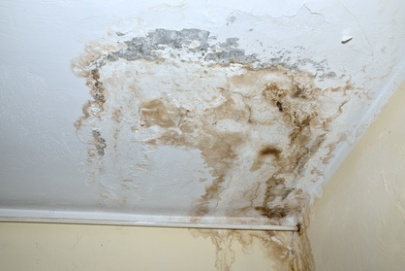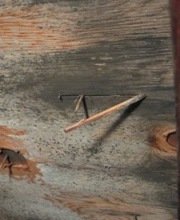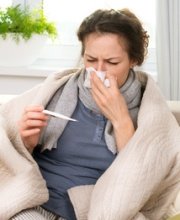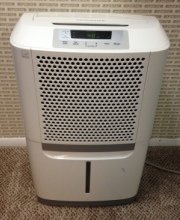Find a Mold Specialist Now
Click or Call, Toll-Free 24/7
toxic Mold In the home
Many people worry about toxic mold these days. It seems everyone has heard stories about household mold causing serious illness to unsuspecting homeowners. Readers often contact us, or even send us photos of mold, asking if the mold they’ve discovered in their homes might be the toxic kind.
We can’t identify the type of mold in your home, not even from photos, since many types of mold look very similar. However, we’ll explain what makes some kinds of mold toxic, tell you about the harmful effects of these types of mold, and let you know how to find out if the mold in your home is toxic. We’ll also tell you what to do and how to get help if you’ve got dangerous mold in your home.
Are Some Kinds of Mold Really Toxic?
Sort of. Mold itself isn’t toxic but some types produce toxic chemicals, called mycotoxins. These mycotoxins can cause serious health problems. Stachybotrys chartarum is often referred to as toxic mold because it is known to produce particularly nasty mycotoxins, but it’s not the only kind of mold that produces mycotoxins. It’s sometimes called black mold, as well, since it is black in color, although it’s not the only kind of mold that is black, either.
How Can You Tell if the Mold in Your Home is Toxic?
Remember, you can’t tell just by looking at it. Some people think if the mold is black in color, it must be stachybotrys chartarum, or toxic black mold. However, many types of mold are black in color and not all of them produce harmful mycotoxins.
If you want to know what kind of mold is in your home, you can have the mold tested. However, it may not really be necessary to find out what kind of mold is growing in your home. The U.S. Centers for Disease Control and Prevention (CDC) states that the agency does not recommend sampling mold for this purpose because all types of mold are potentially harmful and should be removed from the home. Even if the mold doesn’t produce mycotoxins, it can cause health problems.
Still, if you want to know what kind of mold you are dealing with, you can hire a professional mold tester. There are also do-it-yourself mold test kits you can buy, but if you’re going to test the mold in your home to see what kind of mold it is, we recommend hiring a professional because the results will be more accurate and the professional will be able to explain the results to you. You can learn more about mold testing here.
 Mold on ceiling from leak
Mold on ceiling from leakHealth Effects of Toxic Mold
All types of mold can cause respiratory problems when mold spores are inhaled – and because they are so small and light, they are easily inhaled if mold is growing nearby. Respiratory problems can range from coughing, sneezing and sniffles to shortness of breath, chronic sinus infections, bronchitis and pneumonia. Sore throats, headaches and itchy, watery eyes are also common.
Exposure to mold can trigger asthma attacks and may even lead to the development of asthma-like symptoms in people not previously diagnosed with the condition. The Centers for Disease Control and Prevention reports that infants exposed to mold may go on to develop asthma. You can learn more about mold and asthma here.
All types of mold can cause allergic reactions, as well, in sensitive individuals. Symptoms may include an itchy rash or hives.
Molds that produce mycotoxins have been linked to additional health problems. Health issues vary depending on the type of the mold, but may include neurological impairments such as memory loss and trouble concentrating. Depression and anxiety may occur as a result of exposure to toxic mold, along with severe fatigue.
If you’re experiencing health problems that you think might be related to household mold, see your doctor. Let your doctor know if you’ve been exposed to mold and, if you’ve had the mold tested and know what strain it is, provide your doctor with that information, as well. It’s important to see your doctor as soon as possible because exposure to mold can sometimes cause permanent damage to your health if you don’t get treatment in a timely manner. You can learn more about the about long-term effects of mold exposure.
Removing Harmful Mold from Your Home
In addition to seeking medical treatment for any mold-related health problems you are experiencing, you’ll need to have the mold removed from your home as soon as you can. It doesn’t matter if it’s stachybotrys chartarum or some other strain that produces mycotoxins or not. As the CDC tells us, all strains of mold are potentially harmful and need to be removed. If mold is making you sick, you may not recover even with medical treatment if you continue to be exposed to mold at home.
If mold is not making you sick yet, it’s important to have the mold removed before you do become ill. While some people are more susceptible to mold-related illness than others, long-term exposure is likely to have an ill effect on most people.
Some homeowners prefer to handle the mold removal work themselves, while others prefer to hire a professional for the job. The U. S. Environmental Protection Agency (EPA) recommends hiring a professional if you have mold covering a large area (a surface area greater than about 10 square feet), if there is mold in your home’s heating, ventilation and air conditioning system, if mold developed in your home after a flood (especially if flood water may have been contaminated with something hazardous like sewage), or if you have mold-related health problems.
If you suspect the mold in your home may be the toxic kind, you may prefer hiring a professional so that you don’t risk further exposure. Follow this llink to find qualified mold removal professionals in your area. You can schedule a free in-home consultation to discuss your needs.
Return From Toxic Mold To Home Page
Privacy Policy Terms and Conditions Accessibility Do Not Sell My Information Disclaimer Contact Us




